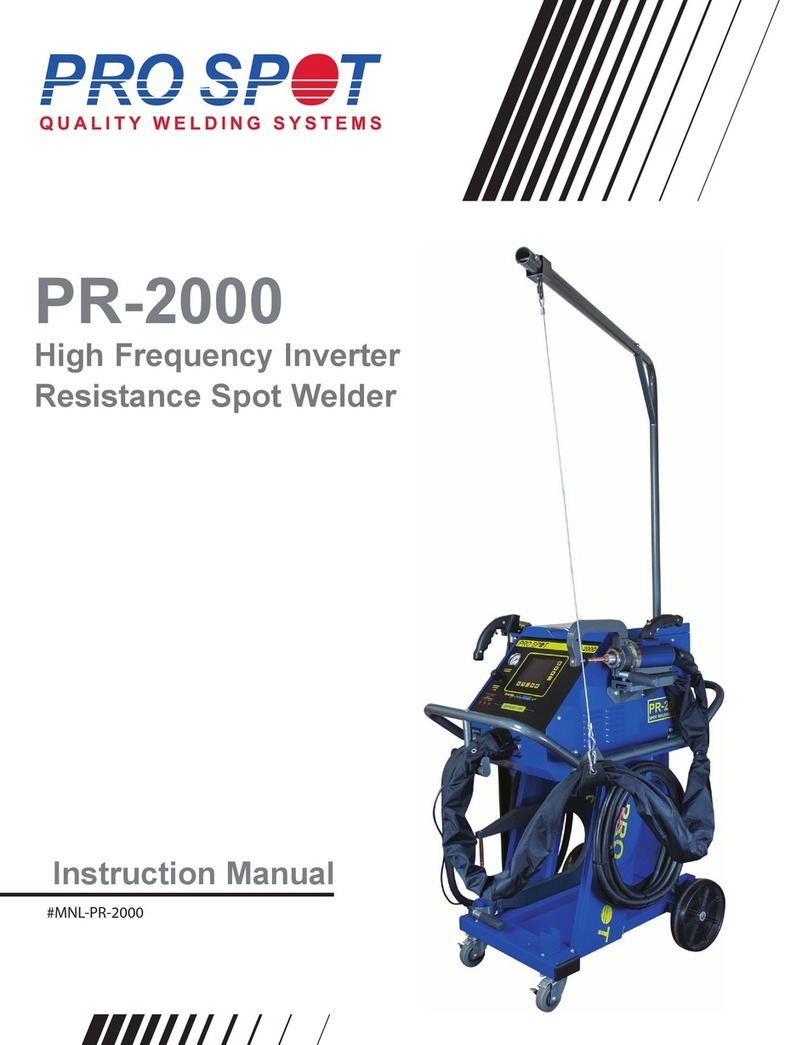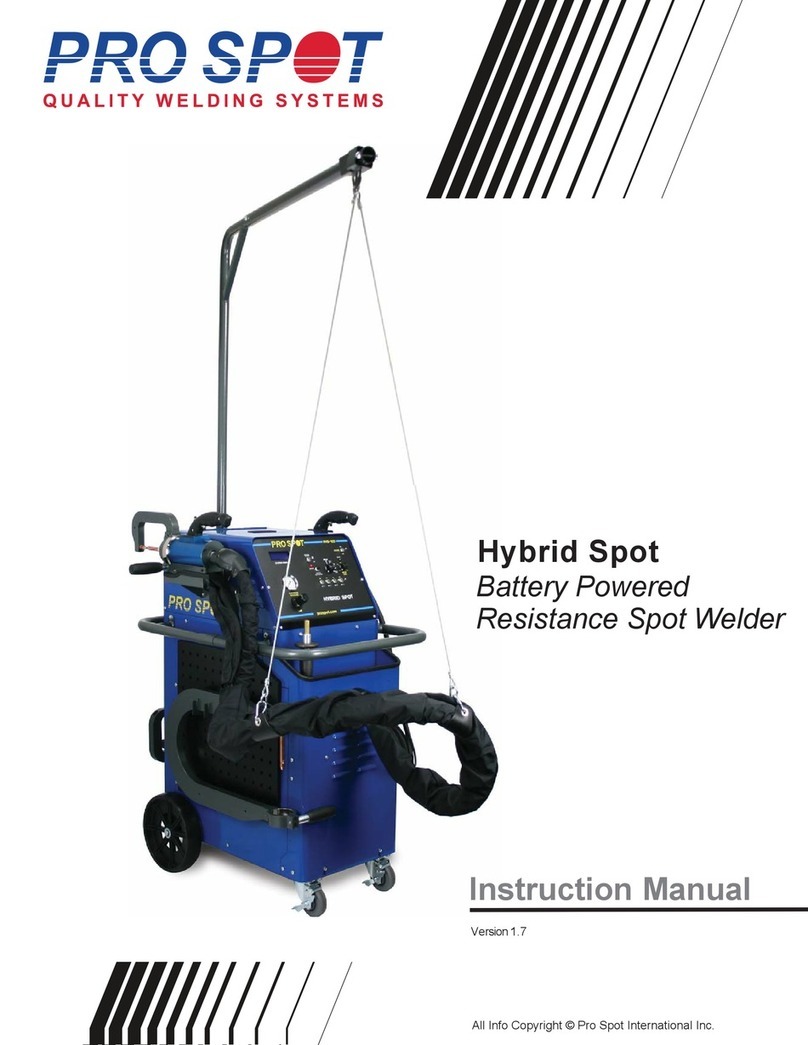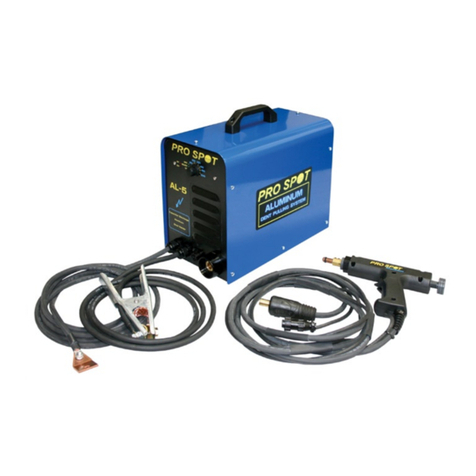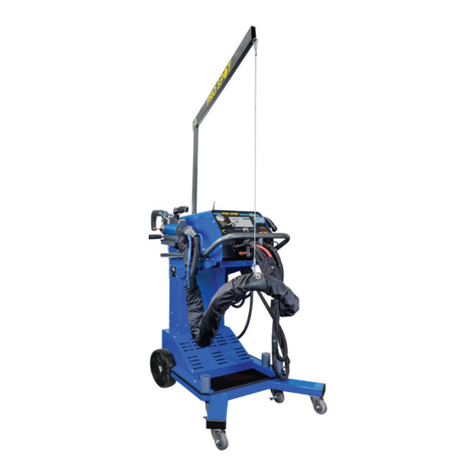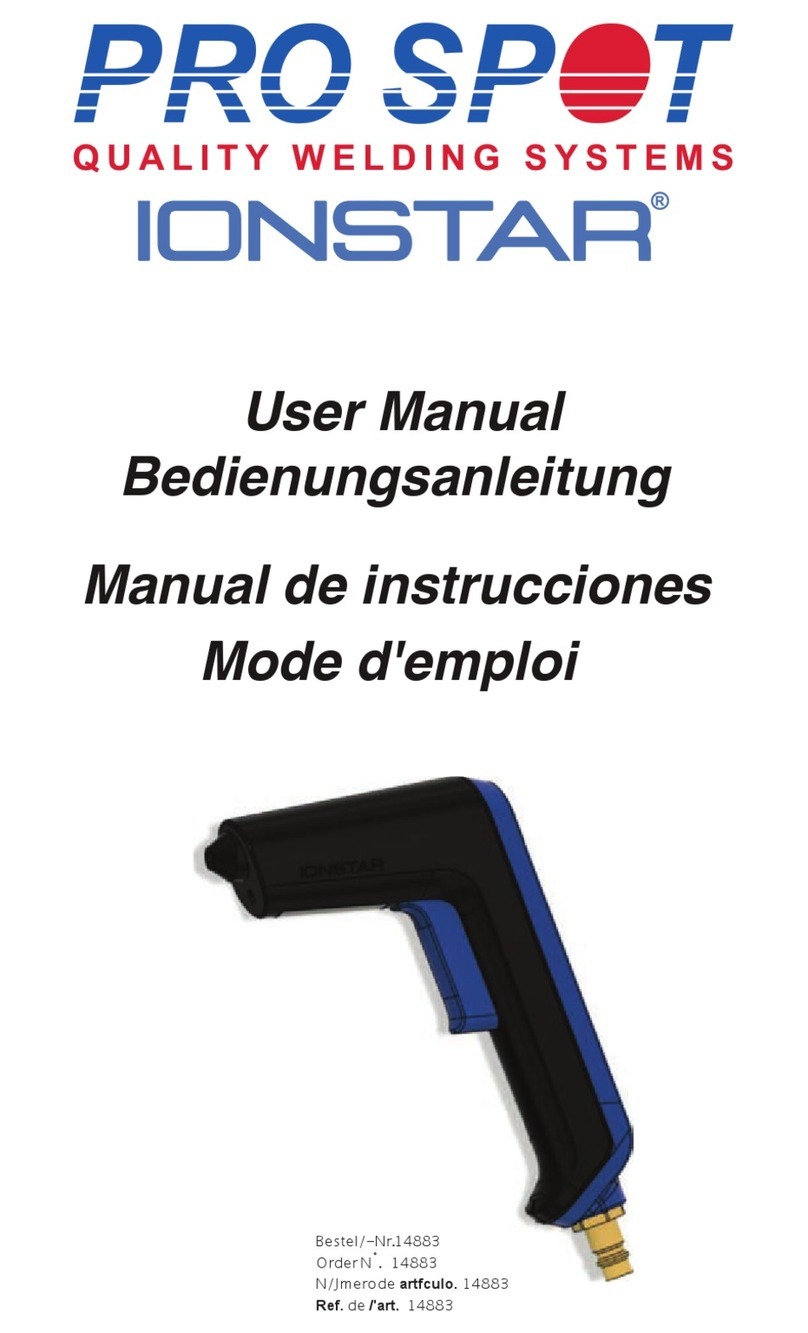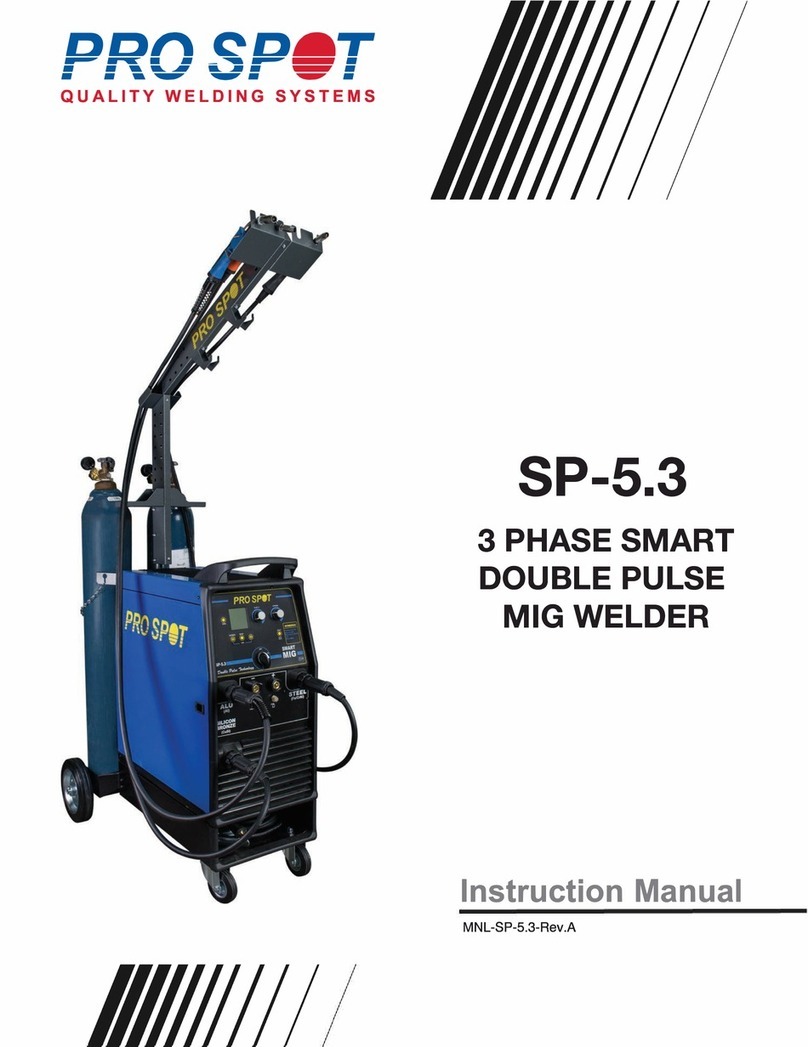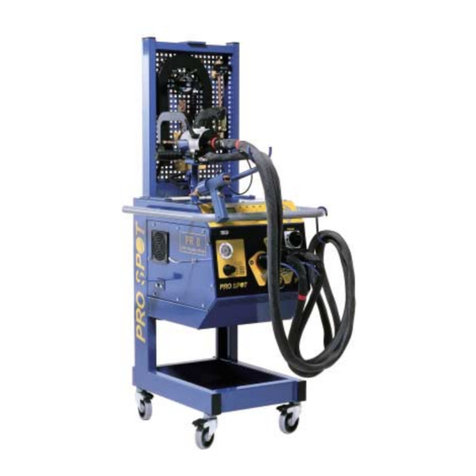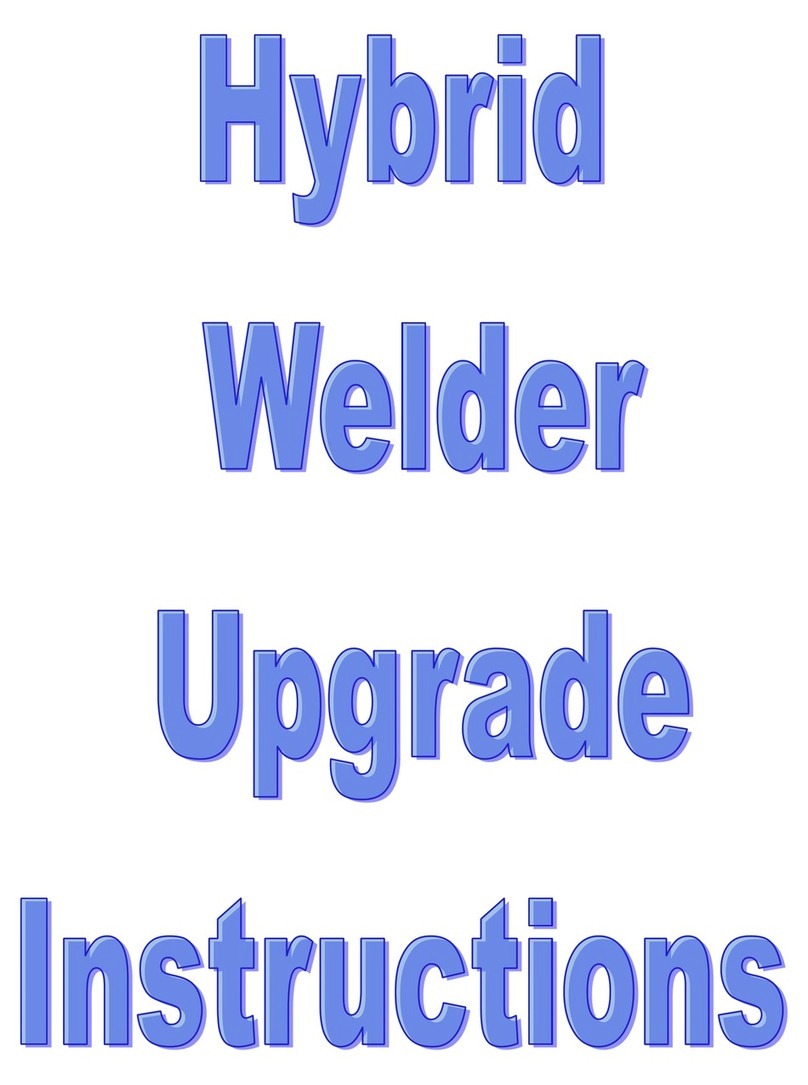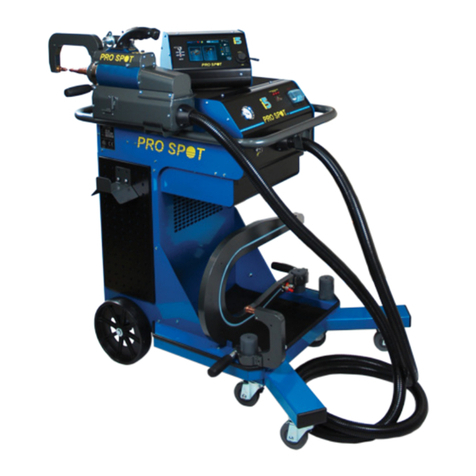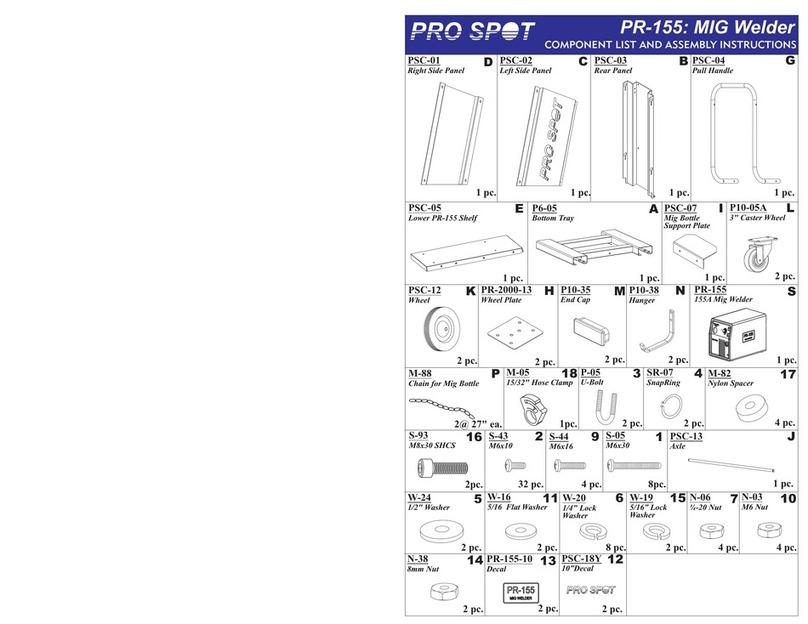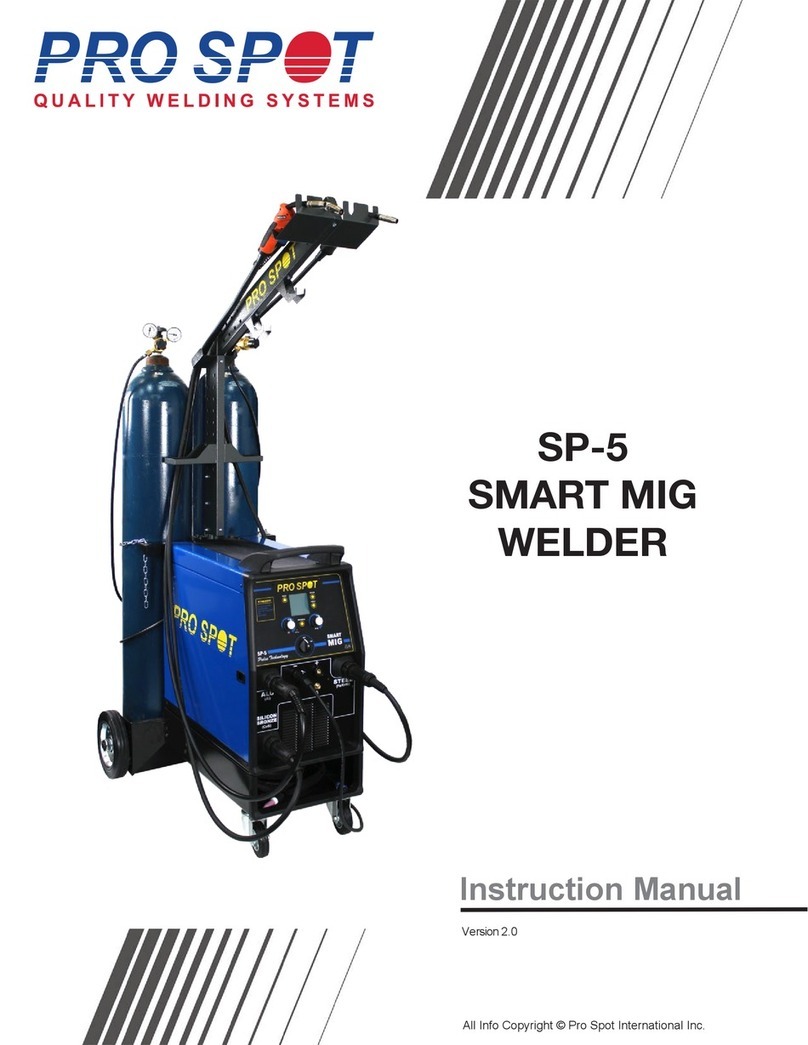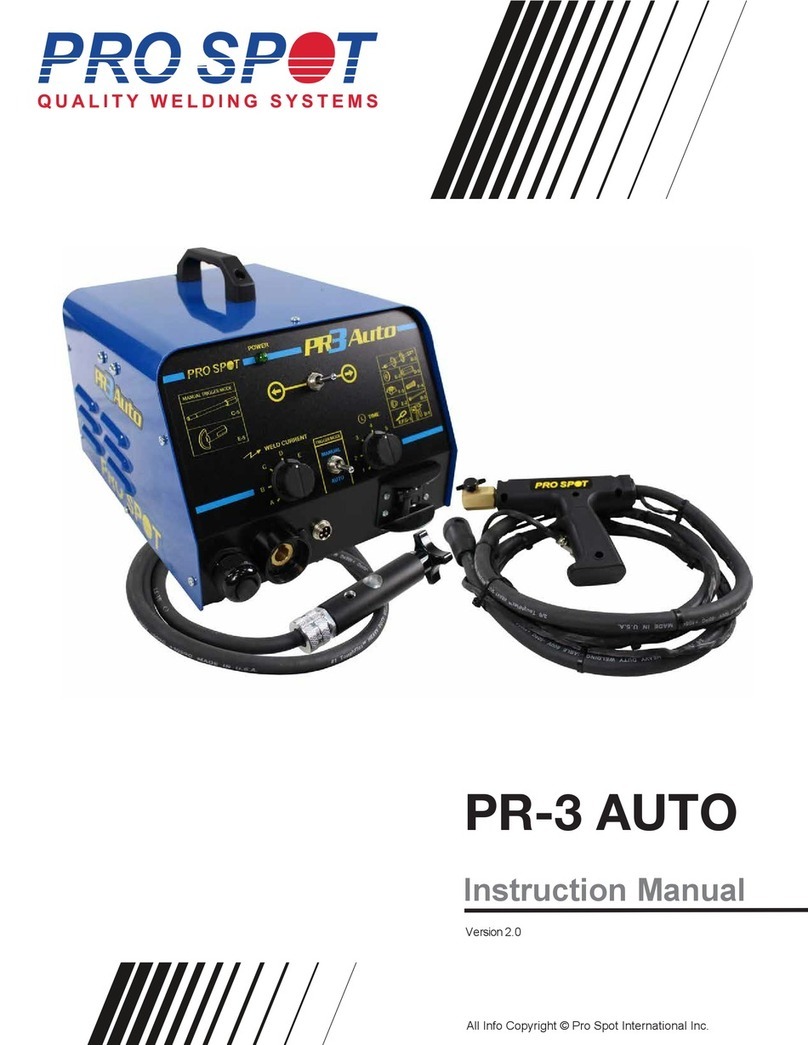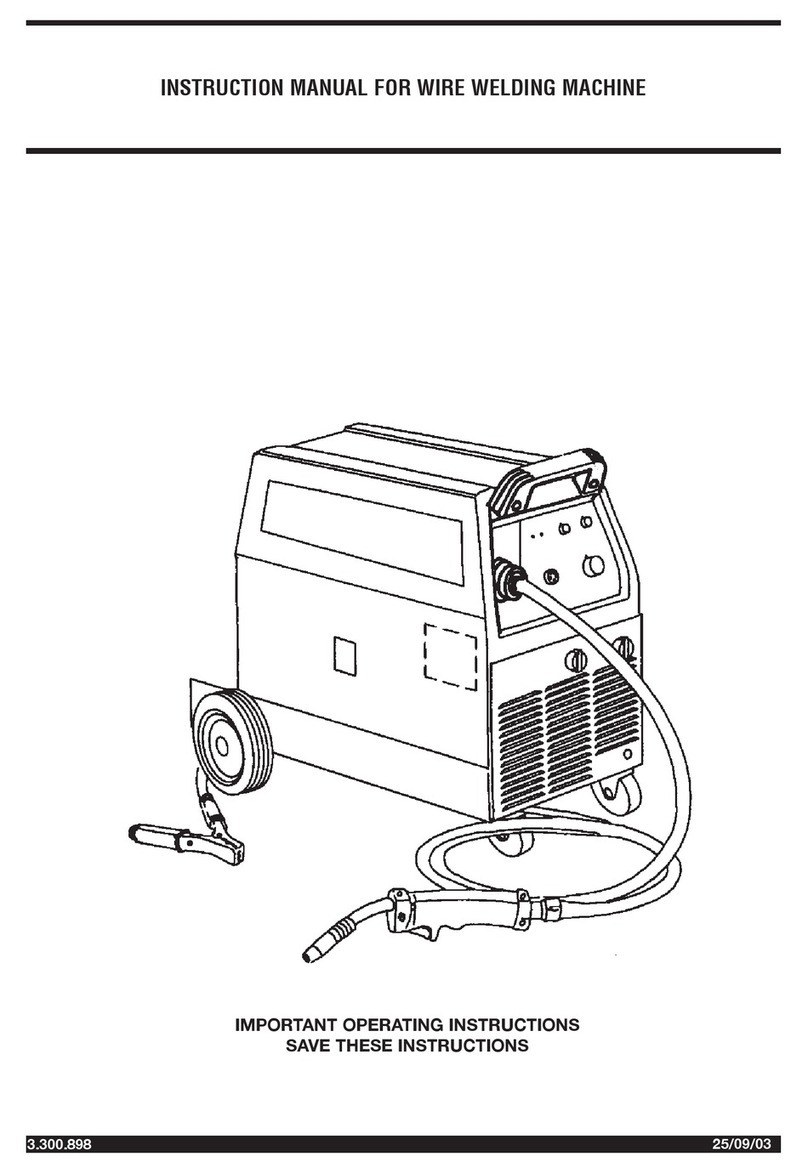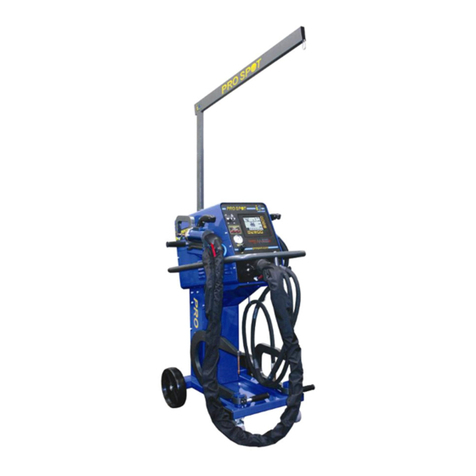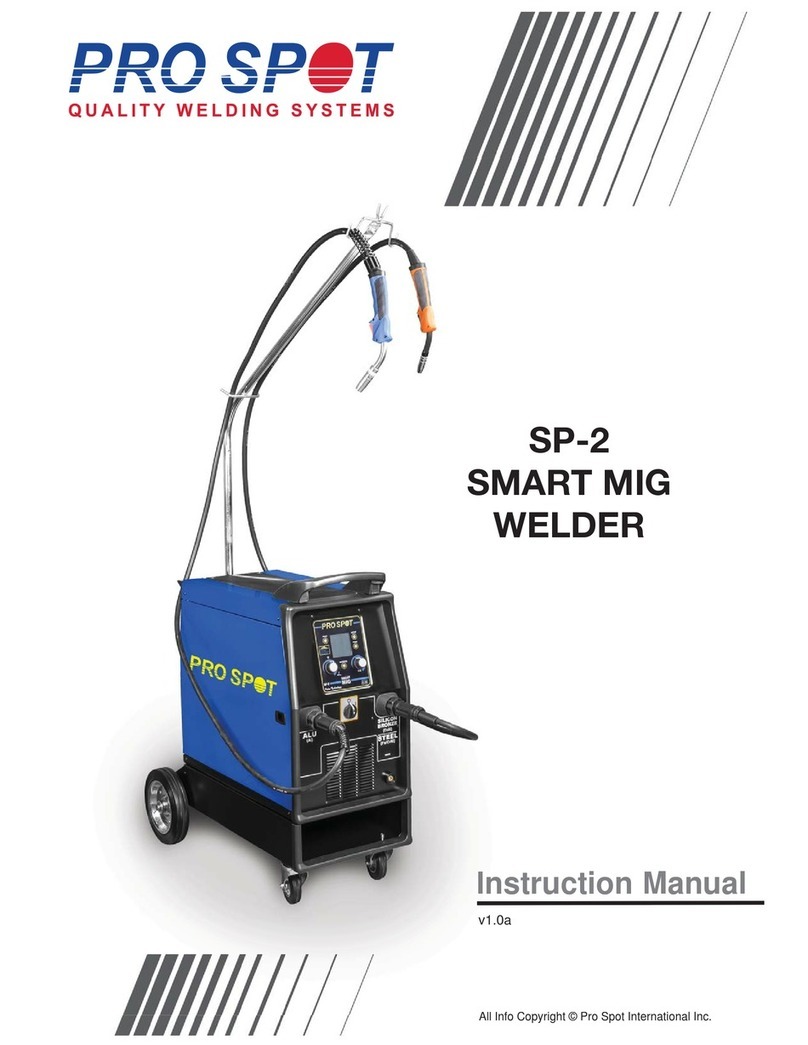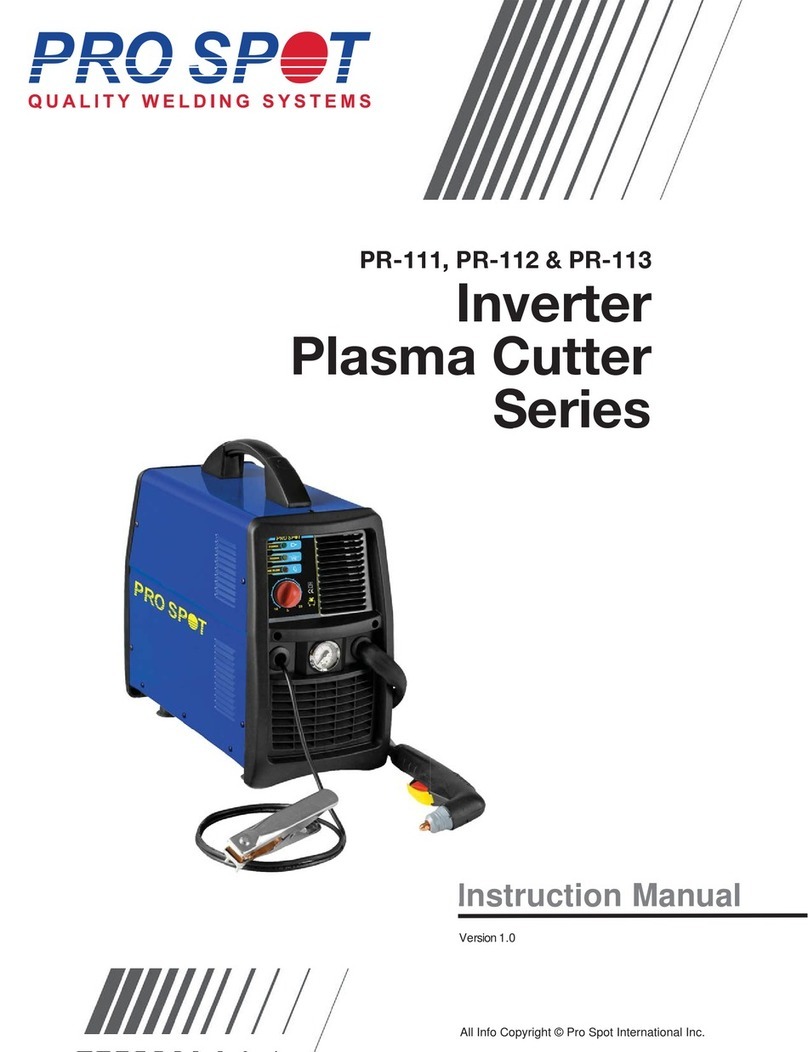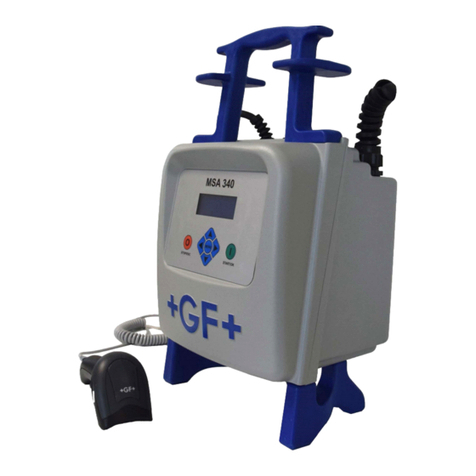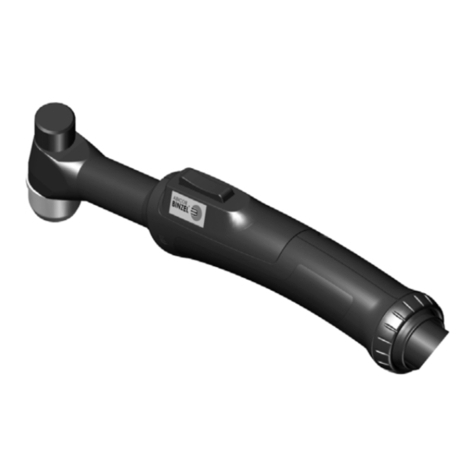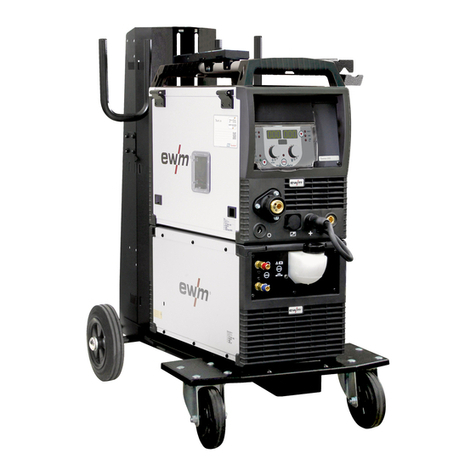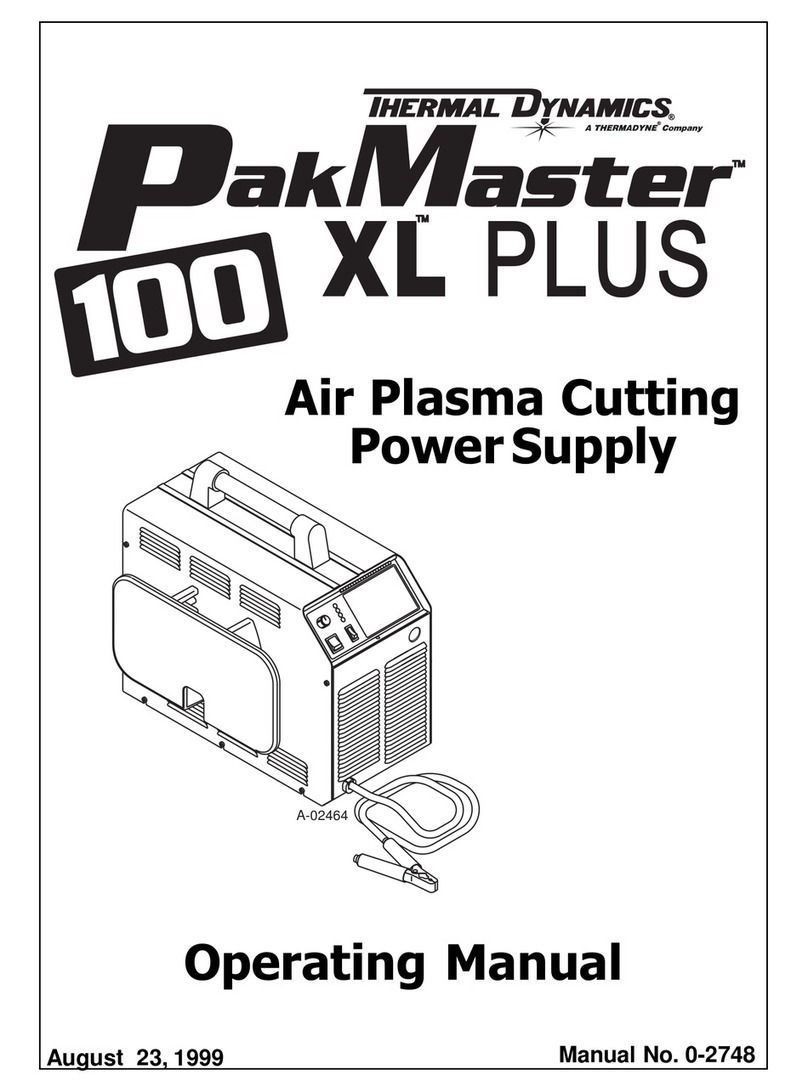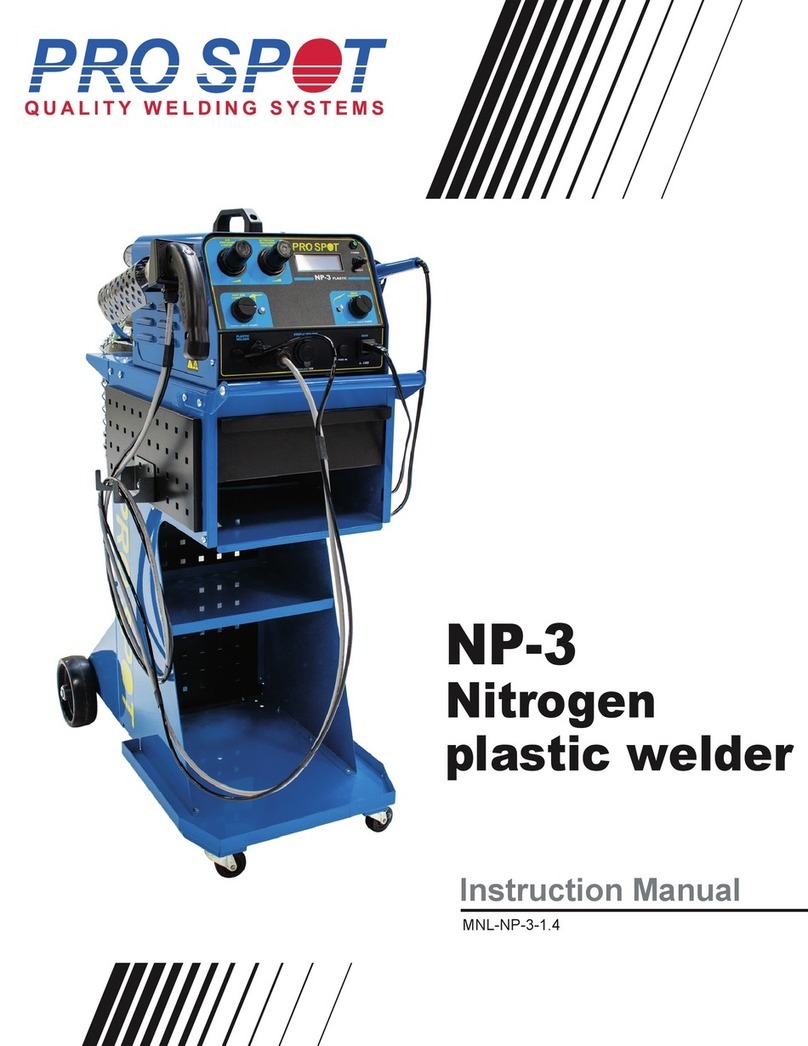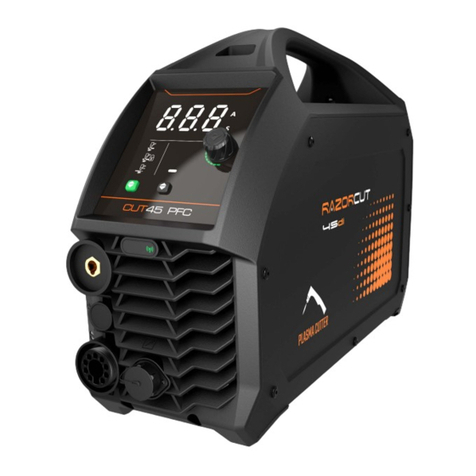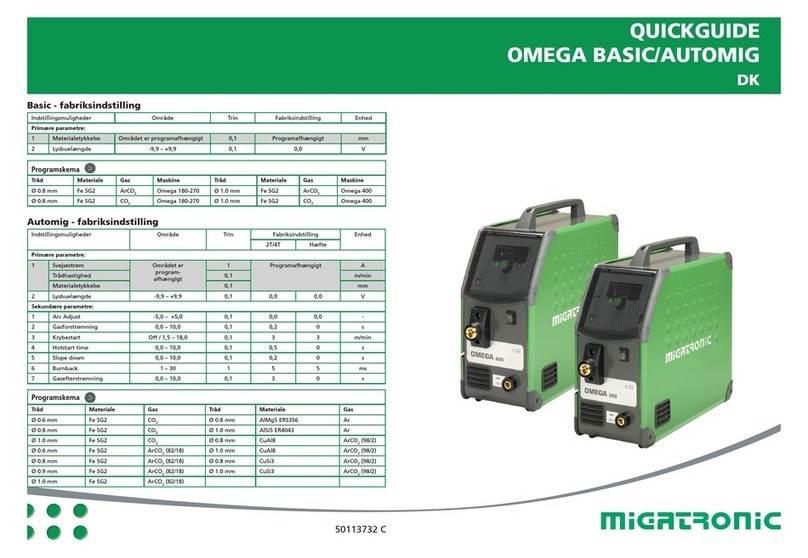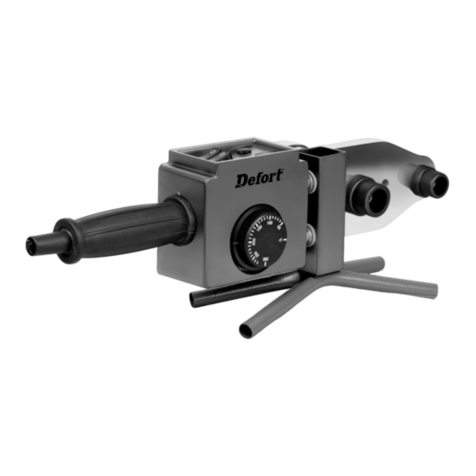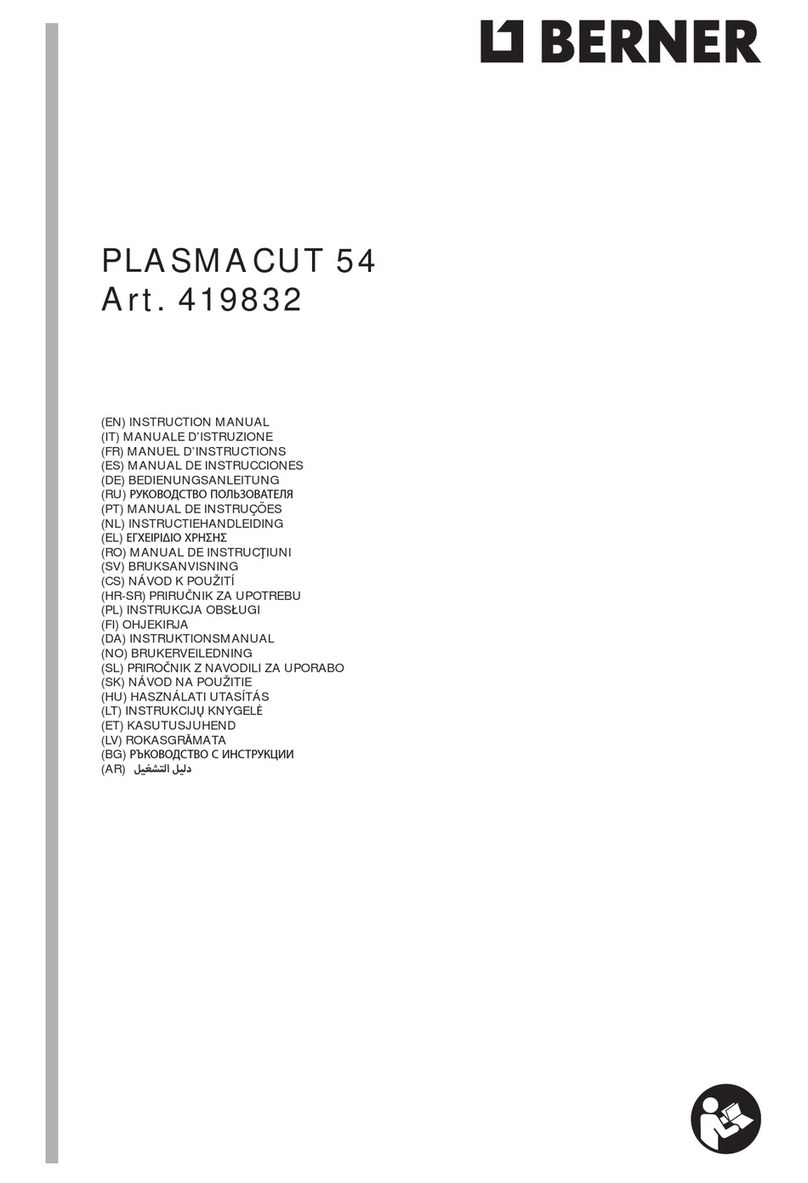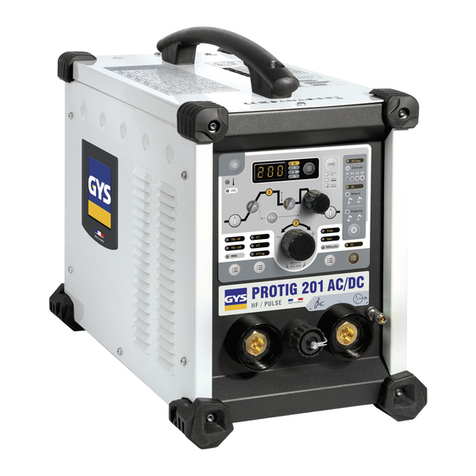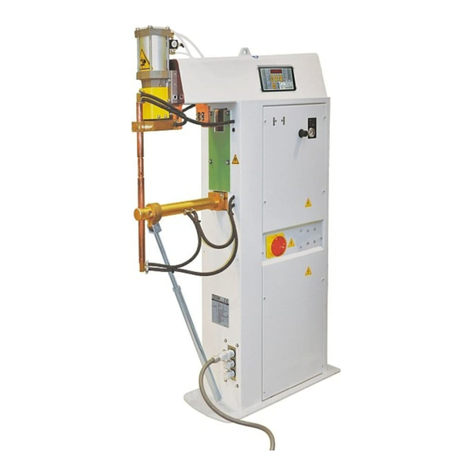
SAFETY INFORMATION
1.0
1.1INTRODUCTION
1.2 PERSONAL PROTECTION
1.3 FIRE PREVENTION
Make sure this manual is carefully read and understood by the welder, and by the maintenance personell.
Welding processes of any kind can be dangerous not only to the operator but to any person situated near
the equipment, if safety and operating rules are not strictly observed.
Fire and explosion can be caused by hot slag, sparks or the welding arc.
Arc rays can injure your eyes and burn your skin. The welding arc produces ultra violet and infra red
light. These arc rays will damage your eyes and burn your skin if you are not properly protected.
Gases and fumes produced during the welding process can be dangerous and hazardous to your health.
• Wear closed, non-ammable protective clothing, without pockets or turned up pants, gloves and
shoes with insulating sole and steel toe. Avoid oily greasy clothing.
• Wear non-ammable welding helmet with appropriate lter lenses designed to shield the neck
and the face, also on the sides. Keep protective lens clean and replace them when broken, cracked or
spattered. Position a transparent glass between lense and welding area.
• Weld in a closed area that is not open to other work areas.
• Never look at the arc without correct protection to the eyes. Wear safety glasses with the side shields
to protect from ying particles.
• Keep an approved re extinguisher of adequate size and type in the welding area. Inspect it regularly
to ensure that it is in proper working order.
• Remove all combustible materials from the working area. If you can not remove them, protect them
with re-proof covers.
• Ventilate welding areas adequately. Maintain sufficient air ow to prevent accumulation of explosive
or toxic concentrations of gases.
• Do not weld on containers that may have held combustibles.
• Always check welding area to make sure it is free of sparks, slag, or glowing metal and ames.
• The work area must have a reproof oor.
• Adequate exhaust ventilation must be used in the area. It should be provided through a mobile fume
extractor or through a built-in system on the workbench that provides exhaust ventilation from the
sides, the front and below, but not from above the bench so as to avoid raising dust and fumes. Local
exhaust ventilation must be provided together with adequate general ventilation and air circulation,
particularly when work is done in a conned space.
• Welding process must be performed on metal surfaces thoroughly cleaned from rust or paint, to avoid
production of harmful fumes. Parts degreased with a solvent must be dried before welding.
• Be very careful when welding any metal which may contain one or more of the following:
Antimony Beryllium Cobalt Manganese Selenium Arsenic Cadmium
Copper Mercury Silver Barium Chromium Lead Nickel
Vanadium
• Remove all Chlorinated solvents from the welding area before welding. Certain chlorinated solvents
decompose when exposed to ultraviolet radiation to form phosgene gas (nerve gas).
All Info Copyright © Pro Spot International Inc.3
